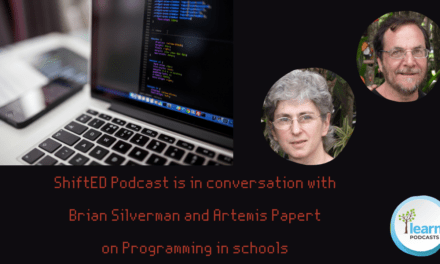Do you always stay in your safe zone? It is perhaps appropriate that I am posting this blog entry on November 18, thirty-two years to the day that my husband passed away fairly suddenly. This is the anniversary of my learning to live outside my comfort zone. I learned that life is full of risks but that meeting the challenges and growing from them is what made me strong and resilient. And I learned to take risks both personally and professionally.
No risk, no reward. This adage is often applied to investing, but it applies, as well, to education. If the testing consortiums in the US have their way, education will be so standardized that it will only be about “right answers” and learning that is easily testable. But life is full of tests that are not about right answers. If we keep our students in the comfort zone – asking questions with only one right answer, assigning projects that only require parroting back what they read in the resources they find, we are not helping them develop that most important skill: asking questions.
Children are by nature risk-takers. They learn to walk by falling a lot; they come equipped with curiosity which leads them to explore and experiment as toddlers. We need to encourage this attitude to keep them excited as learners.
Our classrooms need to be safe places where students can risk being wrong, can risk asking questions that lead to dead ends, can risk going out on a limb, can risk asking questions for which the class (including the teacher) may not be able to find an answer. Our role as educators is not to prepare our students for jobs, but rather, to prepare them for life, where questioning is an essential life skill.
We also have to provide a climate where failure is not an end but a beginning. Many people have been blogging about failure as a First Attempt in Learning. As the article, Making Friends with Failure from Edutopia, http://www.edutopia.org/blog/learning-from-failure-ainissa-ramirez states:
Schools have this failure-thing, the F-word, all wrong. They focus on getting the answer, but it is the questions and the mistakes that are actually more instructive. It’s in these spaces where we learn. I often hear students preface their question with, “This might sound stupid, but . . . ” Students fear sounding dumb — they fear being viewed as a failure. Shouldn’t it be OK to ask questions in a classroom?
Failure is only a failure when we fail to learn from it! Each “failure” should lead to questions –
- What could I do differently?
- Is there another strategy I could use?
- Where can I get the information I need?
What other questions can you think of that would promote growth?
Ask any scientist how many times they have had to rethink their hypotheses, retest, find another route… This young scientist, Audri, understands this. He created a Rube Goldberg invention. I’ll let him speak for himself
Audri expects failures along the way. They only spur him on to perfect his machine until he has success. It is this kind of attitude that we want to nurture in our students.
As I became more comfortable with risk-taking (no I have no intention of bungie jumping or sky-diving or canoeing down the Amazon), here are some of the things I learned:
- When I formulate good questions, it is easier to find relevant answers, whether this has to do with personal health, purchasing an expensive item or having work done where I live.
- Most questions don’t have only one right answer – it is all about evaluating what is best for oneself in the situation.
- It is OK to ask for help. It is not a sign of weakness.
- It is far more important to know whom to ask than it is to try to have all the answers.
- When you go out of your comfort zone you can have amazing adventures and meet interesting people.
- You are never too old to try something new. Life is learning.
- Sometimes you get unexpected results that are better than what you expected. Serendipity really exists.
- That in sharing my ideas, I can step back from them and examine them. In hearing what others think, I can change.
How can you create an atmosphere so that students can experience this kind of learning: to feel comfortable to experiment, to question, to learn from errors, to develop multiple strategies to approach problems? I believe that as teachers, we should model what it is to be a learner, to show one’s vulnerability and to constantly question one’s actions. Supply learning situations which encourage this behaviour.
Do I always live life on the edge now? Absolutely not! At times I need to step back and nurture myself. But I know that stepping out of that comfort zone leads to powerful learning.







Congratulations Susan! What a great post. This is a daily theme with my math students. It is in my everyday day language. It is OK to make mistakes as long as you are focusing on how to move forward. After students make mistakes, I call it–“fine tuning” I will pass this post on to my students and I will encourage them to Tweet their thoughts. Than you Susan.
Thanks, Peggy. It is so important that students looks at “failure” as a learning opportunity. After all, that is how we learned to walk, to talk… by successive approximations until we got it right. And then there was so much more learning…
Loved your post @susanvg on #risktaking It reminded me how real learning normally happens, by trying again and again. I see it everyday when my speedy little toddler learns. The video above was great too. Made me think of Dr. Tae’s bit on Building A New Culture Of Teaching And Learning, on skateboarding as a better model. http://vimeo.com/5513063 (Ya, I have an older son too! “Fail”-ing, it is definitely a way to improve. Just costs a lot in shoes is all.)
Thanks, Paul. I remember that video on skateboarding – similar concept – the importance of trying to see where the “errors” are and reach a goal. Pushing one’s boundaries until you find the sweet spot – and then pushing again for new goals.